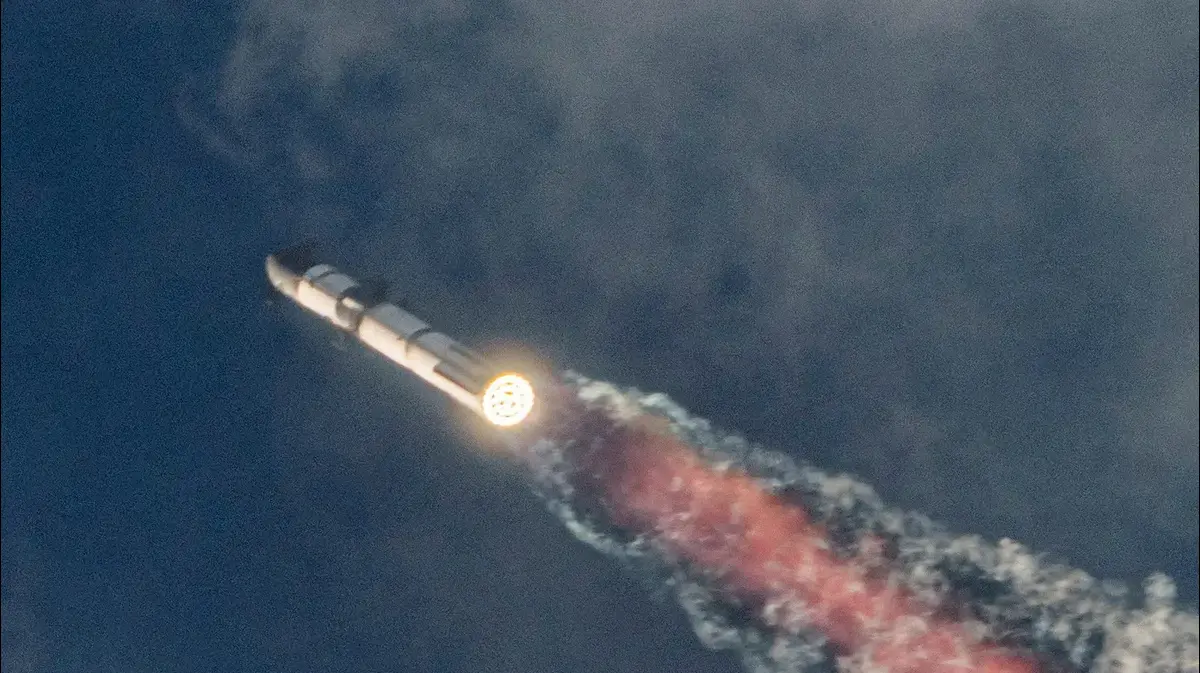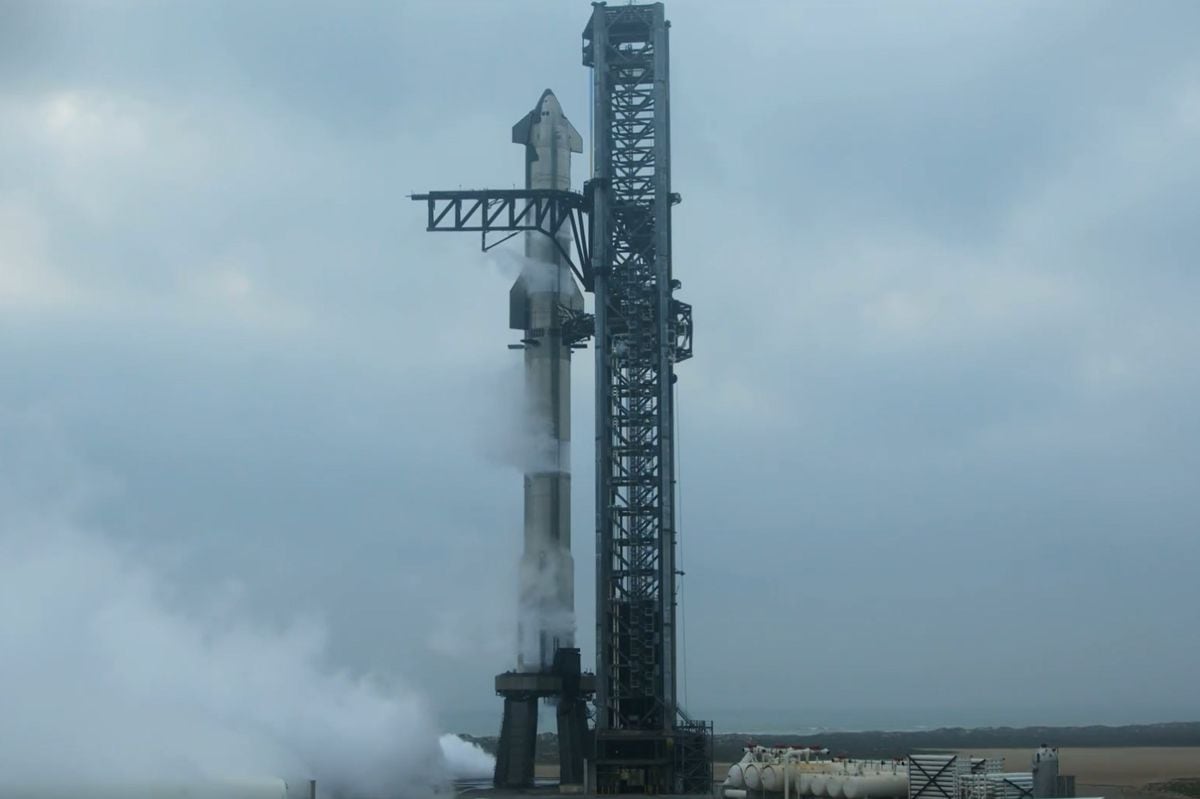Humanity has finally taken the first step to return to the surface of the Moon, after half a century of absence and two failed attempts in summer.
The Artemis I
mission
, without a crew, took off this Wednesday from the Kennedy Space Center, in Florida (United States), with the aim of rehearsing the expedition in which "the first woman and the first non-white person" will walk on the ground moon within three years, according to NASA plans.
The Artemis I
mission will
travel more than two million kilometers in about 25 days, to fly over the surface of the Moon and return to Earth on December 11, with a controlled landing in the Pacific Ocean.
Only three mannequins and two dolls of fictional characters travel on board:
Snoopy the dog and
Shaun
the sheep
.
Liftoff this Wednesday was a crucial test for NASA's new Space Launch System, the most powerful rocket in history, weighing 2,600 tons and taller than a 17-story building.
The ship launched this Wednesday, named Orion, is the result of international cooperation and the work of more than 30,000 people.
The United States, which is leading the adventure, has manufactured the crew capsule.
The European Space Agency (ESA) has built the service module, which will provide astronauts with oxygen and water, as well as propulsion and electricity, thanks to solar panels.JIM WATSON (AFP)
The Artemis I mission has taken off from the Kennedy Space Center in Florida (United States), it is a general rehearsal to test the mechanisms of the ship in conditions that are as realistic as possible.
It does not carry people on board, however in the Orion capsule three mannequins, two stuffed animals and other commemorative objects travel.
John Raoux (AP)
Guests from Banana Creek, inside the Kennedy Space Center, attend the launch of the rocket.
This launch is aimed at rehearsing the expedition in which "the first woman and the first non-white person" will walk the lunar soil within three years, according to NASA plans. Keegan Barber (AP)
Liftoff was a crucial test for NASA's new Space Launch System, the most powerful rocket ever, weighing 2,600 tons and taller than a 17-story building.JIM WATSON (AFP)
The Artemis I mission will travel more than two million kilometers in about 25 days, to fly over the surface of the Moon and return to Earth on December 11, with a controlled landing in the Pacific Ocean.
JOSEPH RIMKUS (REUTERS)
Artemis I marks the birth of a new era of space exploration.
If everything goes smoothly, NASA's plan is to repeat a similar journey in 2024, Artemis II, already with four astronauts on board.
The third mission, Artemis III, would finally land on the Moon, around 2025. JOSEPH RIMKUS (REUTERS)
Artemis I
marks the birth of a new era of space exploration, as explained by Spanish engineer Carlos García Galán, from the US space agency, in an interview with EL PAÍS on Monday.
The goal now is to go to the Moon to stay.
Future projects include the construction starting in 2028 of the Gateway space station, which will orbit the satellite and serve as a springboard for manned missions to the lunar surface, and the installation of a base on the Moon, with a module in which they can live. the astronauts.
This training for life on another world will serve to seriously think about sending a human expedition to Mars starting in 2040.
The ship launched this Wednesday, named
Orion
, is the result of international cooperation and the work of more than 30,000 people.
The United States, which is leading the adventure, has manufactured the crew capsule.
The European Space Agency (ESA) has built the service module, which will provide oxygen and water to the astronauts, as well as propulsion and electricity, thanks to solar panels.
The European aerospace giant, Airbus, has been the main contractor, with 3,000 workers dedicated to this module.
At its facilities in the Madrid town of Tres Cantos, Airbus has developed the aircraft's thermal control units, which will maintain an adequate temperature for the crew and electrical systems.
The engineer Carlos García Galán, from Madrid born in Malaga 48 years ago, is responsible for the integration of the American and European modules.
Engineers Carlos García Galán and Eduardo García Llama, from NASA, with the Virgen de Luna t-shirt.NASA
Another Spanish engineer, Eduardo García Llama, directs the guidance and control system for the Orion spacecraft, from NASA's Johnson Space Center in Houston.
Two hours after launch, this expert will assume control of the ship.
García Llama, a 50-year-old from Madrid, has added the Latin words
Non sufficit orbis
on the chest of his official uniform.
It was the motto of Felipe II, king of the Spanish empire in the 16th century.
It means: "The world is not enough."
The engineer reflected two months ago on the transcendental meaning of
Artemis I
, in an interview with this newspaper.
“What [this mission] tells us is that we are exploring beings.
As Neil Armstrong said, we follow our instinct to explore, just as salmon swim against the current,” he noted.
NASA's plan is to repeat a similar journey in 2024,
Artemis II
, with four astronauts on board.
The third mission,
Artemis III
, would finally land on the Moon, around 2025. Two American astronauts, a woman and a man, will then walk on the lunar surface, according to the schedule provided by the US space agency.
The first European will have to wait, as admitted by the Austrian Josef Aschbacher, director general of ESA.
His wish is that a European astronaut steps on the Moon before the end of this decade, but the negotiations with NASA are not closed.
Contrail of the Artemis I rocket after its launch at Cape Canaveral, this Wednesday.
MALCOLM DENEMARK/FLORIDA TODAY (AP)
García Llama and García Galán have continued a tradition of trips to the Moon.
A few days after Neil Armstrong set foot on the lunar surface for the first time, on July 21, 1969, the secretary of the Brotherhood of the Virgin of Luna, Felipe Sánchez Urbano, sent some cards to the three members of the mission, announcing his the intention that the image, venerated in the Andalusian towns of Pozoblanco and Villanueva de Córdoba, be declared the patron saint of all astronauts.
Shortly after, Sánchez Urbano received a letter from NASA with a photograph signed by Neil Armstrong, Buzz Aldrin and Michael Collins.
The two main Spanish engineers on the
Artemis I mission
, García Llama and García Galán, have now dedicated a t-shirt to the brotherhood, with the motto "Virgin of the Moon, protector of space missions and astronauts".
More information
Humanity takes the first step for a woman to walk on the Moon
The launch of
Artemis I
was scheduled for August 29, but NASA aborted the operation after a dramatic countdown, in which a hydrogen leak was detected, a crack in the thermal insulation between the liquid oxygen and liquid hydrogen tanks and a definitive incident in one of the four engines of the launch vehicle.
The second attempt, on September 3, was also cancelled, this time due to a leak in the apparatus to fill the rocket with fuel.
Two hurricanes,
Ian
and
Nicole
, caused delays ever since.
This Wednesday, the launch was solemn, with a previous ceremony that included a concert by the French-American cellist Yo-Yo Ma and a multitude of statements by veterans of the Apollo Program, which took humans to the Moon in 1969.
Aeronautical engineer Pedro José Herráiz, from ESA, celebrates the successful launch.
"Third time was the charm!" He applauded.
Herráiz, born in León 35 years ago, has worked in the European service module, essential for the American crew capsule.
“We are finally going back to the Moon, and this time together!
It's moments like this that make all the efforts and sacrifices worth it.
It is a true honor to be part of this team that is making history”.
You can follow
MATERIA
on
,
and
, or sign up here to receive
our weekly newsletter
.

/cloudfront-eu-central-1.images.arcpublishing.com/prisa/7BQXGX7QHVEEWG2JWLOO5QGMAU.jpg)







